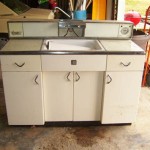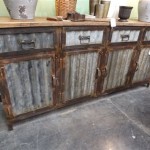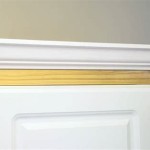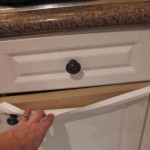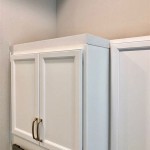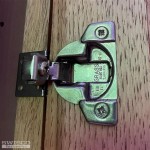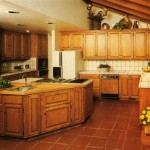Best Ways to Update Kitchen Cabinets
Kitchen cabinets often serve as the focal point of the kitchen, influencing the overall aesthetic and functionality of the space. Over time, cabinets can become outdated, worn, or simply fail to reflect evolving design preferences. Updating kitchen cabinets can significantly enhance the appearance and value of a home without the expense and disruption of a full kitchen remodel. This article will explore several effective methods for updating kitchen cabinets, ranging from simple cosmetic changes to more involved modification and replacement strategies.
The methods chosen for updating kitchen cabinets frequently depend on factors such as budget, the condition of the existing cabinets, and the desired aesthetic outcome. Simple cosmetic updates, such as painting or replacing hardware, are cost-effective and can be completed with minimal disruption. More extensive updates, such as refacing or replacing doors, offer a more dramatic transformation while still preserving the existing cabinet structure. In cases where the existing cabinets are structurally unsound or no longer meet functional needs, complete replacement may be the most appropriate solution.
Painting or Staining Existing Cabinets
Painting or staining is one of the most budget-friendly and impactful ways to update kitchen cabinets. This method involves thoroughly cleaning, sanding, and priming the existing cabinet surfaces before applying a fresh coat of paint or stain. The choice between paint and stain depends on the desired aesthetic and the type of wood used in the cabinets. Paint offers a wider range of color options and can effectively conceal imperfections, while stain enhances the natural grain and texture of the wood.
The preparation process is crucial for achieving a professional-looking finish. Thorough cleaning removes grease, grime, and any residue that could prevent proper adhesion of the paint or stain. Sanding creates a slightly roughened surface that allows the primer to grip effectively. Priming provides a uniform base for the paint or stain and helps to prevent bleed-through from underlying colors or stains. A high-quality brush or sprayer is recommended for applying the finish coat, ensuring even coverage and minimal brushstrokes.
Choosing the right type of paint is also essential. For kitchen cabinets, a durable, moisture-resistant paint is recommended. Options include acrylic latex paint, which is easy to clean and offers good color retention, and oil-based paint, which provides a harder, more durable finish but requires more effort to clean and may yellow over time. Consulting with a paint specialist can help in selecting the best product for a specific project.
Staining cabinets requires a different approach. The existing finish must be completely removed through sanding or chemical stripping. The wood is then prepped with wood conditioner to ensure even stain absorption. Multiple coats of stain may be necessary to achieve the desired color depth. A clear topcoat is applied to protect the stain and enhance its durability. As with painting, proper preparation is key to achieving a professional-looking stained finish.
Replacing Cabinet Hardware
Replacing cabinet hardware is a simple yet effective way to update the look of kitchen cabinets. New knobs, pulls, and hinges can dramatically alter the style of the cabinets, providing a fresh, modern, or more traditional aesthetic. This method is relatively inexpensive and can be accomplished quickly, making it an ideal option for those seeking a quick and easy update.
When selecting new hardware, consider the overall style of the kitchen and the existing cabinet design. Modern kitchens may benefit from sleek, minimalist hardware in materials such as stainless steel or brushed nickel. Traditional kitchens may call for more ornate hardware in finishes such as antique brass or oil-rubbed bronze. The size and spacing of the hardware should also be considered to ensure a comfortable and ergonomic grip.
Before purchasing new hardware, it is essential to measure the existing hole spacing on the cabinet doors and drawers. This will ensure that the new hardware fits properly and that minimal drilling or modifications are required. If changing the size or location of the hardware, it may be necessary to fill the existing holes and drill new ones. Wood filler can be used to fill the old holes, and a drill with appropriate-sized bits can be used to create new holes.
The type of hardware chosen can also impact the functionality of the cabinets. Self-closing hinges can prevent doors from slamming shut, while soft-close drawer slides can provide a smooth and quiet operation. These upgrades can enhance the overall user experience and add value to the kitchen.
Beyond knobs and pulls, consider updating other hardware elements such as drawer slides and door hinges. Replacing these components not only improves the functionality of the cabinets but also adds to the overall updated feel of the kitchen. Ensure that replacement hardware is of good quality to ensure durability and long-term performance.
Refacing Kitchen Cabinets
Refacing kitchen cabinets involves replacing the existing cabinet doors and drawer fronts while keeping the existing cabinet boxes in place. This method offers a more significant transformation than painting or replacing hardware, but it is less expensive and disruptive than a full cabinet replacement. Refacing is a viable option when the cabinet boxes are structurally sound but the doors and drawer fronts are outdated or damaged.
The refacing process begins with removing the existing doors, drawer fronts, and any exposed hardware. The cabinet boxes are then prepared by cleaning and sanding the surfaces. A veneer, typically made of wood or laminate, is applied to the exposed surfaces of the cabinet boxes. The veneer is chosen to match or complement the new doors and drawer fronts. New doors and drawer fronts are then installed, along with new hinges and hardware.
Selecting the right materials for refacing is crucial. Wood veneer offers a natural look and can be stained or painted to match the desired aesthetic. Laminate veneer is a more affordable option that is available in a wide range of colors and patterns. The doors and drawer fronts can be made of solid wood, wood veneer, or laminate, depending on budget and design preferences.
When considering refacing, it is important to carefully assess the condition of the cabinet boxes. If the boxes are warped, damaged, or showing signs of water damage, refacing may not be the best option. In such cases, complete cabinet replacement may be necessary. A professional cabinet refacer can assess the condition of the existing cabinets and provide recommendations based on their findings.
Refacing can also be an opportunity to update the style of the cabinets. Changing from raised-panel doors to flat-panel doors, or vice versa, can dramatically alter the look of the kitchen. Adding decorative moldings or trim can also enhance the overall aesthetic. Consider the existing kitchen design and select doors, drawer fronts, and veneer that complement the overall style.
Adding or Modifying Cabinet Storage Solutions
Beyond aesthetic updates, improving the functionality of kitchen cabinets can significantly enhance the cooking and storage experience. Adding or modifying cabinet storage solutions involves incorporating features that optimize space and increase accessibility. This can range from simple additions like pull-out shelves to more complex modifications like installing new organizational systems.
Pull-out shelves are a popular addition to base cabinets, providing easy access to items stored in the back. These shelves slide out, allowing users to see and reach items without having to bend over or reach into the depths of the cabinet. Pull-out shelves can be custom-made to fit specific cabinet sizes and can be made of wood, metal, or plastic.
Another useful storage solution is the addition of drawer dividers and organizers. These dividers help to keep drawers neat and organized, preventing items from shifting around and becoming cluttered. Drawer dividers can be made of wood, plastic, or metal and can be custom-configured to fit specific drawer sizes and storage needs.
For pantry cabinets, consider adding roll-out trays or adjustable shelves. Roll-out trays provide easy access to items stored on high or low shelves, while adjustable shelves allow for customization of the storage space to accommodate items of different sizes. These features can significantly improve the organization and accessibility of pantry items.
Modifying existing cabinets can also involve converting a standard cabinet into a more specialized storage solution. For example, a base cabinet can be converted into a pull-out trash and recycling center, or an upper cabinet can be modified to accommodate a microwave or other appliance. These modifications can maximize the use of available space and improve the functionality of the kitchen.
When adding or modifying cabinet storage solutions, it is important to consider the overall design and layout of the kitchen. The new storage solutions should complement the existing cabinets and enhance the overall functionality of the space. Consult with a kitchen designer or cabinet specialist for guidance on selecting and installing the most appropriate storage solutions.
Replacing Kitchen Cabinets Entirely
While the previous methods focus on updating existing cabinets, sometimes complete replacement is the best or only option. This is especially true when the existing cabinets are structurally unsound, severely damaged, or no longer meet the functional needs of the kitchen. Replacing kitchen cabinets provides the opportunity to completely transform the kitchen's layout, style, and functionality.
The process of replacing kitchen cabinets involves removing the existing cabinets and installing new ones. Before beginning the replacement process, it is important to carefully plan the new kitchen layout and select the desired cabinet style, materials, and finishes. Consult with a kitchen designer to create a functional and aesthetically pleasing design.
When selecting new cabinets, consider factors such as material, construction, and style. Common cabinet materials include solid wood, plywood, particleboard, and MDF (medium-density fiberboard). Solid wood is the most durable and expensive option, while particleboard and MDF are more affordable alternatives. Cabinet construction refers to the way the cabinets are assembled and can impact their strength and durability.
Cabinet style refers to the overall aesthetic of the cabinets, and there are many different styles to choose from, including traditional, modern, transitional, and contemporary. The cabinet finish refers to the color and texture of the cabinets and can be achieved through painting, staining, or applying a laminate or veneer. Select a cabinet style and finish that complements the overall design of the kitchen.
Replacing kitchen cabinets can also be an opportunity to update the countertop, backsplash, and flooring. These elements work together to create a cohesive and stylish kitchen design. Consider selecting countertops, backsplashes, and flooring that complement the new cabinets and enhance the overall aesthetic.
While replacing kitchen cabinets can be a significant investment, it can also provide a significant return on investment by increasing the value of the home and improving the overall functionality and enjoyment of the kitchen. Proper planning and execution are key to ensuring a successful cabinet replacement project.

25 Easy Ways To Update Kitchen Cabinets

10 Simple Ideas To Update Your Kitchen Cabinets Jenna Sue Design
How To Update Your Kitchen Cabinets Without Replacing Them Real Estate U S News

Upgrade Kitchen Cabinets On A Budget

How To Update Kitchen Cabinet Doors On A Dime My Blessed Life

Diy Kitchen Cabinet Upgrade With Paint And Crown Molding

25 Easy Ways To Update Kitchen Cabinets

10 Ways To Update Kitchen Cabinets Without Replacing Them

How To Paint Your Kitchen Cabinets Houzz

5 Signs Your Kitchen Cabinets Need Updated Quad City Bath
Related Posts

